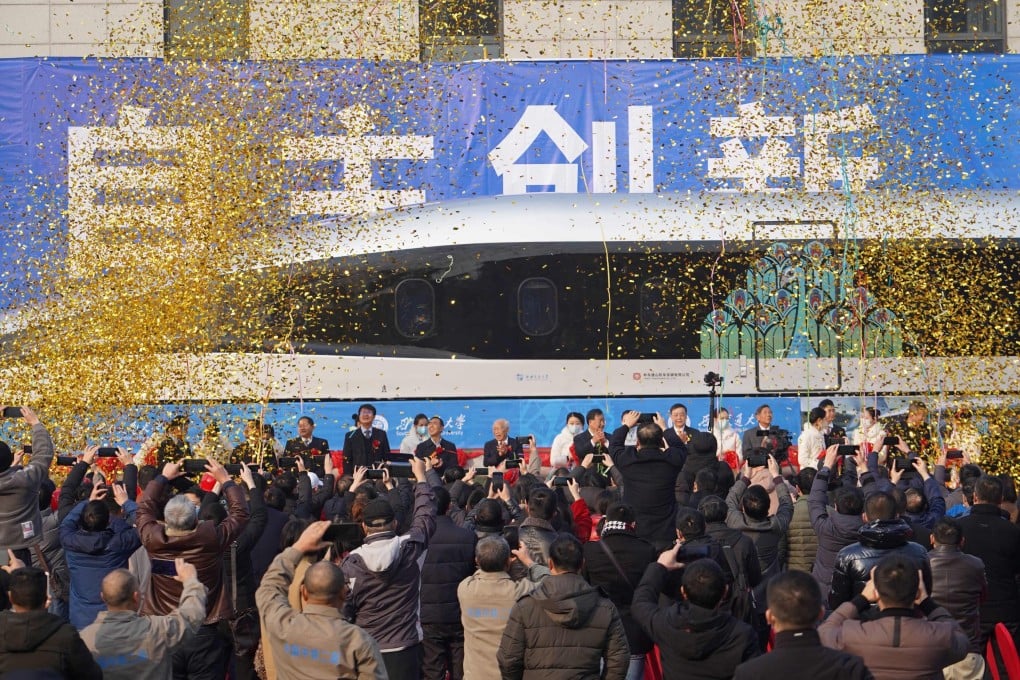Is this Chinese prototype the shape of maglev train tech to come?
- Researchers at a university in southwestern China say their approach could mean superfast but cheap travel
- They say they have found a way to keep costs down and a commercially viable product could be at most six years away

Researchers at Southwest Jiaotong University unveiled the new maglev train and 165-metre (540 feet) test track in Chengdu on Wednesday.

01:38
China unveils state-of-the-art maglev train prototype designed to travel at 620km/h
The train is designed to travel at up to 620km/h (385mph) but researchers said they were working to stretch that speed to 800km/h (497mph).
The new maglev is part of Beijing’s ambitious plan to create faster links between cities.
China has the world’s fastest commercial maglev service, Shanghai Transrapid, which started operations in 2002 and has a maximum speed of 430km/h.
A faster maglev line featuring superconducting technology that operates at 500km/h is expected to open in Japan in 2027, running between Tokyo and Nagoya.
But researchers at Southwest Jiaotong University said their superconducting maglev technology was more economical than that of their Japanese counterparts.